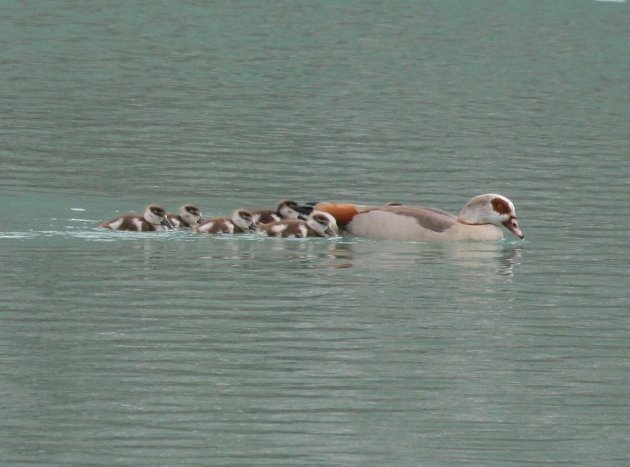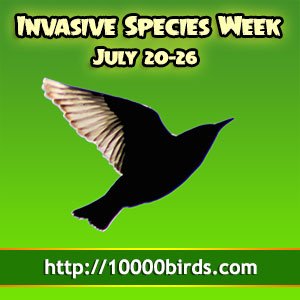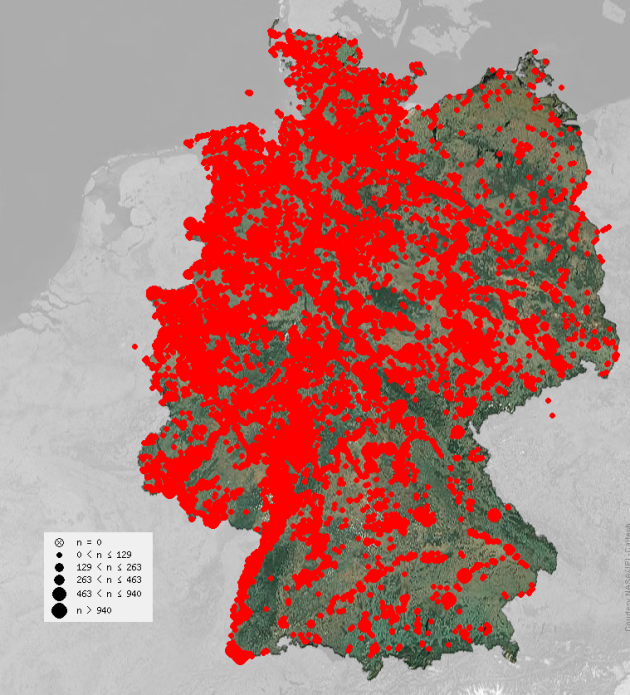
On 22 January 1879, a pair of Egyptian Geese sat quietly on top of Isandlwana Hill and watched closely. Then, they had a plan.
When I started birding in earnest during the 1980s in south-west Germany, no one talked about Egyptian Geese. They did not feature in any of our field guides, and were confined to many a traveler’s Afrotropical dreams. During the early 1990s, rumours surrounding the occurrence of a few Egyptian Geese in far north-western Germany emerged, the result of an increasing and spreading Dutch feral population. Still, this was not much of an issue, nothing we discussed. Just a peculiarity. The situation was still much the same in 1995, when a friend and I went on a short birding trip to the Netherlands in winter, specifically to see geese. We saw all of the expected ones, including out target Pink-feet and my life Beauty. And for the first time ever in Europe, I encountered a few Egyptian Geese somewhere around Amsterdam. This was great! What an odd situation, seeing a small group of Egyptian Geese plowing through the snow of a Dutch meadow. We laughed, exchanged high-fives, shook our heads. Funny Dutch… Then came my move to the far north-east of Germany in 1996. The Baltic coast was grand, filled with geese and all other kinds of waterfowl imaginable. Of course, our imagination did not incorporate the Egyptian Goose. The Netherlands were far away. I remember once finding an exhausted Egyptian Goose on a field there in 1998, after a strong storm from the West. This was a rarity, and I was quite excited. Of course I considered it to have been blown there from the Netherlands. This was to be my first and only encounter of an Egyptian Goose on Germany soil for the next decade. The year 2008 saw me move back to Germany’s south-west, and my job required me to travel extensively throughout the country from then on. I was in shock. Everywhere I went, there were hordes of Egyptian Geese! It was indeed the most dominant element of the waterfowl community after the Mallard, even putting Mute Swans to shame. And while a map of their distribution in Germany during the mid-1990s would have included just a few single dots along the German-Dutch border, the map now looks like this:
Observations of Egyptian Geese in Germany; map produced with the fabulous online data base ornitho.de
.
Through a peculiar coincidence, I had been living in the last Egyptian-free bastion of Germany, the far north-east, while the rest of the country was being overrun in little more than a decade! By the way, the red dots in the north-east are recent and increasing. Even this last bastion has now fallen…
In spite of acknowledging that the Egyptian Goose has managed one of the most effective invasions ever to be recorded in Germany, there is still controversy over whether it can indeed be labelled an invasive species. As yet, there is no data clearly demonstrating that the spread of the invader has brought negative consequences to native species, although the aggressive nature of the Egyptian Goose would clearly indicate that native ducks and other waterfowl are not amused about having to share their space with them. And you can’t even blame them for being bullies. Indeed, being obnoxious is surely a basic prerequisite to their survival in their home, sub-Saharan Africa, where living next to a waterhole means fending off native megafauna, ranging from a herd of elephants to a pride of lions, on a daily basis. It can thus be expected that a bird who is used to holding its own agains hyaenas will care little about competing with European waterfowl. Why, then, aren’t we seeing vanishing numbers of our native ducks and grebes as soon as the geese move in? Well, I don’t know – and apparently, neither does anyone else – but I suspect we owe this to the presence of the Coot. Yes, coots are common and widespread all across Europe, they occur on almost every body of water from small ponds to large lakes, and boy, are they bullies. Introducing just anohter bully in the form of the Egyptian Goose therefore didn’t catch the local fauna off-guard, and the coots’ antics might have prevented a duckpocalypse here in Germany (*).
 I think we’re not in Kenya anymore.
I think we’re not in Kenya anymore.
However, being an obnoxious bird with an unpleasant voice and a habit of feeding off lawns and agricultural fields next to wetlands brings another, more indirect disadvantage to our local flora and fauna, an unexpected yet no less significant side effect. People, and with “people” I mean the general public as well as farmers, do not appreciate the Egyptian Geese. They hate their guts, for the geese poop where the kids used to play and bathers used to spread their beach towels, and they cause damage to crops especially on fields that are situated next to wetlands. Therefore, anything that might favour the occurrence or abundance of the geese is evil in the minds of all concerned. This has far-reaching consequences for nature conservation: Restoring natural wetlands, providing quarry ponds with areas of shallow water during recultivation, and revitalizing former flood plains of rivers to promote biodiversity are conservation measures that would benefit native flora and fauna, but also invite Egyptian Geese to move in. Therefore, any such measure is being met with an increasingly stiff headwind during the permit process – by the general public.
So, while the invasive nature of the Egtyptian Goose has yet to be proven, the presence of the species has significantly contributed to giving waterfowl in general a bad rap around here. And this is why birders wish the geese would just go away. Which they won’t.
(*) I may or may not have been serious about this.
…
 Here at 10,000 Birds 20 July – 26 July is Invasive Species Week. We use the term “Invasive Species” in the broadest sense, to encompass those invasive species that have expanded beyond their historical ranges under their own power, by deliberate introduction, or by unintentional introduction. The sheer number of species that have been shuffled around on our big earth is impressive, though we will be dealing with the smaller sample size of invasive avians and other invasives that effect avians. Nonetheless, this week will be chock full of invasive species. So batten down the hatches, strap on your helmet, and prepare to be invaded! To access the entire week’s worth of content just click here.
Here at 10,000 Birds 20 July – 26 July is Invasive Species Week. We use the term “Invasive Species” in the broadest sense, to encompass those invasive species that have expanded beyond their historical ranges under their own power, by deliberate introduction, or by unintentional introduction. The sheer number of species that have been shuffled around on our big earth is impressive, though we will be dealing with the smaller sample size of invasive avians and other invasives that effect avians. Nonetheless, this week will be chock full of invasive species. So batten down the hatches, strap on your helmet, and prepare to be invaded! To access the entire week’s worth of content just click here.














One interesting thing is that while Egyptian Geese have frequently escaped from game farms in the northeastern US, so far they haven’t managed to establish a self-sustaining population. The local one in New Jersey seems to have mostly disappeared in the last few years. I wonder what makes them successful in Germany (and elsewhere in Europe) but not here.
If my memory isn’t playing tricks with me, I seem to remember mostly pairs, one or two pairs per wetland site in the south of Africa, even in austral winter, but do not remember flocks, and if I ever seen them, they must have been pretty small, perhaps three or four pairs max.
Perhaps the geese are changing their flocking habits in the Northern Hemisphere?
After reading this I checked the situation in the Uk, seems they are on the march there too.
That is funny, indeed. Maybe it has to do with the composition of your predator community, e.g. Coyotes, Raccoons etc? Whatever the reason – be very happy!
Yes, now that I think about it, I guess you are right! I also only remember pairs or small family groups. Here in Germany, seeing pairs is the norm, but it is not so very unusual to see small flocks of 20-30 here, and in Germany’s North-West, where the bulk of the population is located, flocks numbering more than 100 are not too rare. It would certainly seem as if they have changed their flocking habits.
Enjoy your Egyptian-Geese-free Balcans while you can! They’ll soon be your neighbours.
Nothing can stop them (certainly no English Channel), they’re headed for world domination. Soon your Grallards will be Egryllards…